By Cele & Lynn Seldon
The Persian Gulf and its many Arab countries remain a cultural enigma to many. However, Windstar’s Sparkling Sands & Cities of the Persian Gulf—one of the line’s several Select Sailings—brings this exotic region of ancient destinations and modern marvels to life.
Exploring forts and castles from the 16th and 17th centuries, marveling at luxe mosques and castles, visiting Bedouin villages and architectural wonders, shopping at authentic souks and modern malls, or simply relaxing on miles of soft sand beaches, the countries of Oman, United Arab Emirates, Bahrain, and Qatar are a study in Middle Eastern culture.
Appealing to historians, culture buffs, outdoor adventurers, and shoppers, this itinerary truly has something for everyone. Here are some can’t-miss highlights:
Muscat, Oman
Before sailing out of Oman’s port capital, arrive early to explore this city of antiquity and modernity. For history buffs, don’t miss the majestic 16th century Al Jalali Portuguese fort overlooking the harbor or the Bait Al Zubair Museum for insights into Omani culture and artifacts.
For a peek into the world of Islam, the modern Sultan Qaboos Grand Mosque, with its massive dome, five minarets, marble walls and Persian carpet that covers the 4.5-million-square-foot floor and consists of over 1.7 million knots is a remarkable sight. It is also the only mosque in Oman open to non-Muslims. Be sure to take a head covering and dress appropriately.
Wandering the streets past lively fish markets, exploring traditional Omani artifacts at the Mutrah Souk, window shopping at modern malls, or wandering the beaches are other great ways to start your Persian vacation.
Khasab, Oman
The first stop on Windstar’s magical Middle East carpet ride is Khasab, Oman, on the tip of the Musandam Peninsula. A vacation destination for Omanis and residents of the United Arab Emirates, Khasab is often considered the Norway of Arabia, with its white limestone cliffs and breathtaking fjords. A cruise aboard a traditional Omani dhow—a one- or two-lateen-masted sailing vessel—is the perfect way to explore this area’s unique geography, with its narrow channels, coastline scenery, and dolphin encounters.
For a scenic overview of the area, head to Khawr Najd, a majestic viewpoint overlooking the turquoise-blue lagoon where the mountains meet the sea.
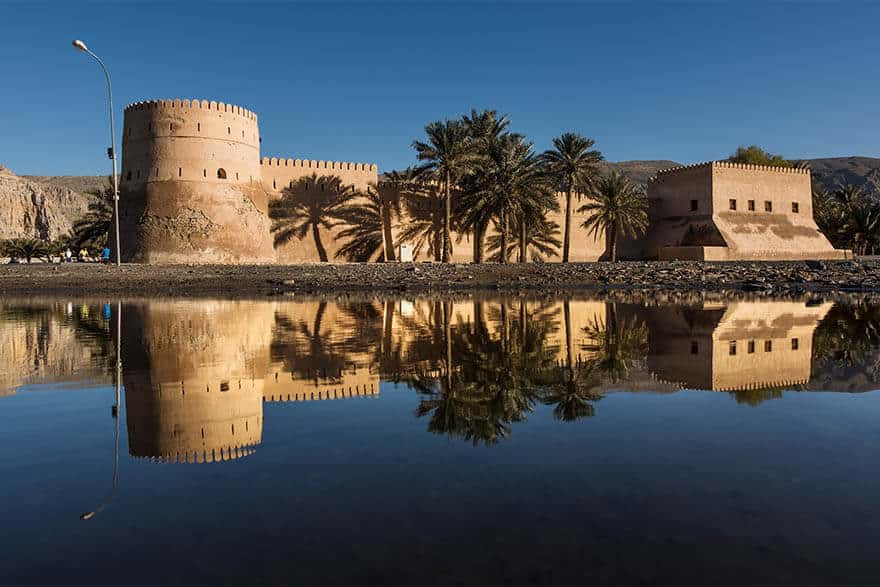
For other land-based activities, explore the many stone turrets and towers at the 17th century Khasab Fort—including a museum on local life, as well as an ethnographic museum, or head to Bassa Beach for sand, surf, and water activities.
Ras Al Khaima, United Arab Emirates (UAE)
The most northernly of the seven emirates that make up the UAE, Ras Al Khaima (or RAK City to those in the know) features almost 40 miles of dazzling coastline, from pristine beaches to mangroves, creeks, and lagoons surrounded by terra cotta dunes, desert sand, and the mighty Hajar Mountains as the backdrop.

If a day on the beach doesn’t appeal, perhaps pearling does. An important trading post known for its magnificent pearls, RAK City has an extraordinary pearl fishing history that dates back over seven millennia. Head to Al Jazirah Al Hamra, the only remaining historical pearling village in the Persian Gulf and explore the ghost town remnants of this once vibrant village of over 500 homes, schools, a mosque, and marketplaces. More pearling history and other ethnographic artifacts can be found at the National Museum.
For the adventurous, soar down the world’s longest zipline at Jebel Jais.
Abu Dhabi, United Arab Emirates (UAE)
The capital city (and second most populous) of the UAE, Abu Dhabi is a city rich in oil, architectural wonders, magnificent mosques, and one of the world’s highest per capita incomes. The city is a perfect blend of traditional culture and modern amenities and is often called the Manhattan of Arabia, with all its massive glass skyscrapers.
Don’t miss the Sheikh Zayed Grand Mosque, the largest mosque in the country, covering an area of over 30 acres with room for more than 40,000 worshippers. Architectural wonders include: a floral-designed courtyard that covers approximately 180,000 square feet and is considered to be the largest piece of mosaic marble in the world; a massive 60,000-square-foot carpet that took two years to complete by more than 1,200 carpet knotters; and 96 columns in the main prayer hall covered with 20,000-plus marble panels inlaid with mother of pearl. Don’t forget to respect the culture and dress appropriately.
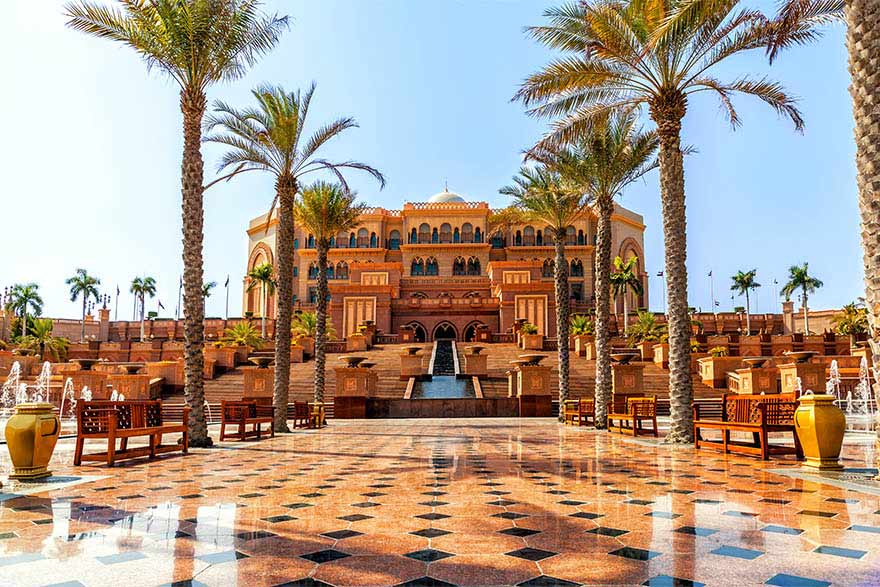
Other Abu Dhabi sites that shouldn’t be missed are the Louvre Abu Dhabi Art Museum; a stroll along The Corniche, -5-mile-long promenade with play areas, biking and walking paths, restaurants, cafés and the immaculate Corniche Beach; shopping at the 370 stores and 60 restaurants in Yas Mall; or looking for cultural handicrafts and authentic Arabian souvenirs at one of a half-dozen traditional souks.
Manama, Bahrain
Bahrain’s capital and largest city, Manama is the economic epicenter of Bahrain, with many trade, financial and commercial institutions throughout the city. However, since Manama is one of few Islamic countries where alcohol is legal, the city has become known for its thriving nightlife.
As with most cities in the Persian Gulf, Bahrain has several forts to explore, including the Bahrain Fort, where occupation of the 180,000- square-foot fort has been recorded from 2300 BC to the 16th century. 6,000 years of Bahrain’s history also comes alive in the Bahrain National Museum.
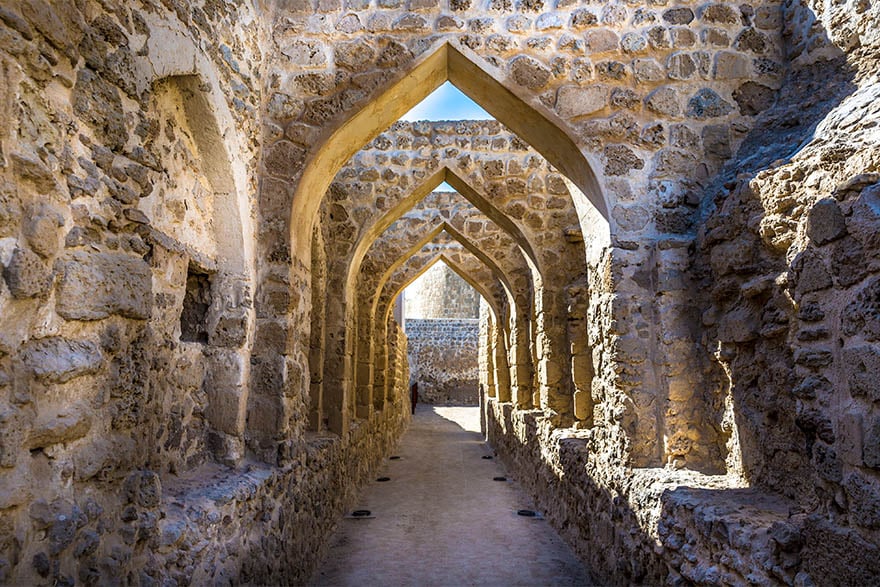
For a true Bahrain experience, head to Bab Al Bahrain and the Manama Souk. Filled with textiles, spices, incense, perfumes, handicrafts and souvenirs along its narrow alleyways—as well as modern products from across the world and traditional cafés, Manama Souk conjures up an authentic ancient souk.
Doha, Qatar
Qatar’s capital city and home to more than 80 percent of this wealthy country’s population, Doha is a vibrant, cosmopolitan city with massive skyscrapers, gleaming shopping malls, arts and culture everywhere you turn, and an up-and-coming culinary scene.
For a glimpse into cultural art, head to the Museum of Islamic Art. Housing one of the most impressive and comprehensive collections of Islamic art in the world, the I.M. Pei-designed building is a work of art itself. Mathaf Arab Museum of Modern Art also features a world-class collection of modern Arab art.
Just outside the Museum of Islamic Art lies the four-mile Corniche, a pedestrian promenade that follows along the Doha Bay coastline and passes many of Doha’s landmarks. It’s the perfect spot for sunset viewing.

Go shopping at the Souk Waqif for traditional Arab finds or Villaggio Mall, which features all kinds of luxe retailers, specialty stores, an ice-skating rink, and indoor canals complete with gondolas.
Sir Bani Yas, United Arab Emirates
A visit to San Bani Yas, an island off the coast of UAE and halfway between Abu Dhabi and Doha, Qatar, is more about wildlife, archaeological and geological sites, and ancient religious structures than the more modern world of the Gulf region.
Making up more than half of the island is the Arabian Wildlife Park, home to more than 17,000 free-roaming animals—many of which are indigenous to the region, including Arabian oryx, gazelles, giraffes, hyenas, cheetahs, and more than 100 wild bird species. Other ways to explore the natural environment of the island is through 4×4 and adventure safaris, kayaking, hiking and mountain biking.
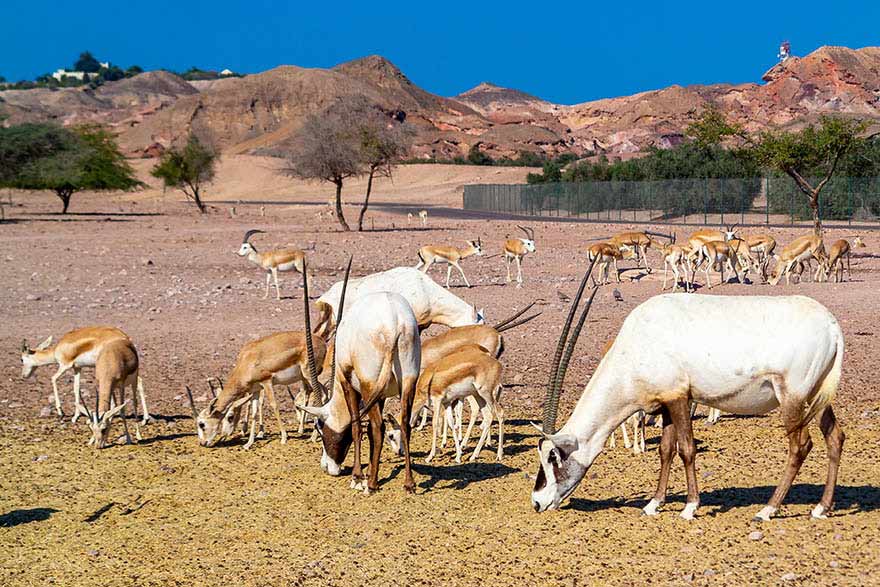
The crest of a salt dome created millions of years ago by natural geological forces, dozens of archaeological sites and remnants from the Bronze Age and Late Stone Age are scattered across the island. There’s also a pre-Islamic Christian monastery which was thought to have been built around 600AD, abandoned in 750AD, and rediscovered during excavations in 1992.
Dubai, United Arab Emirates
The most populous city in the UAE and the capital of the Emirate of Dubai, the most populous of the seven emirates that make up the UAE, Dubai is the third-richest country in the world and is known for its modern skyscraping architecture, über-luxury shopping, sports and, of course, Arab arts and culture.
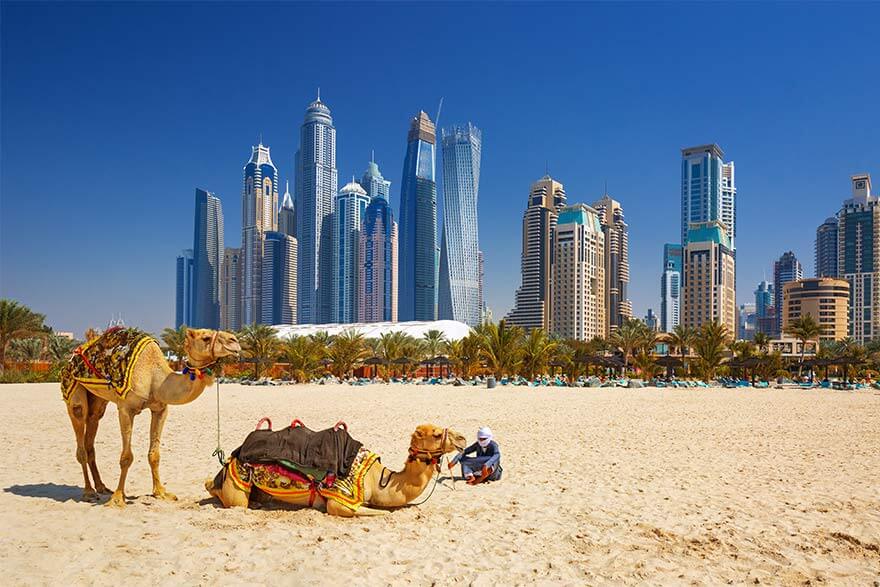
Plan to extend your trip with a few days in this cosmopolitan adult playground. Highlights include: Burj Khalifa, the world’s tallest building—at 2,717 feet—with the highest observation tower in the world on the 124th floor for magnificent city views that extend all the way to the Persian Gulf; an educational and guided visit to the Jumeirah Mosque; strolling the cafés, tea houses and art galleries of Bastakiya Quarter, the city’s historic district; and shopping at more than 1,300 stores at the Dubai Mall (they also have an ice skating rink, a movie theater, an aquarium, and a nightly light show at the outside Dubai Fountain), the Gold Souk (one of the most renowned gold trading centers in the world) or the Spice Souk, with flavors from around the globe that make the perfect souvenir of your Persian Gulf vacation.





